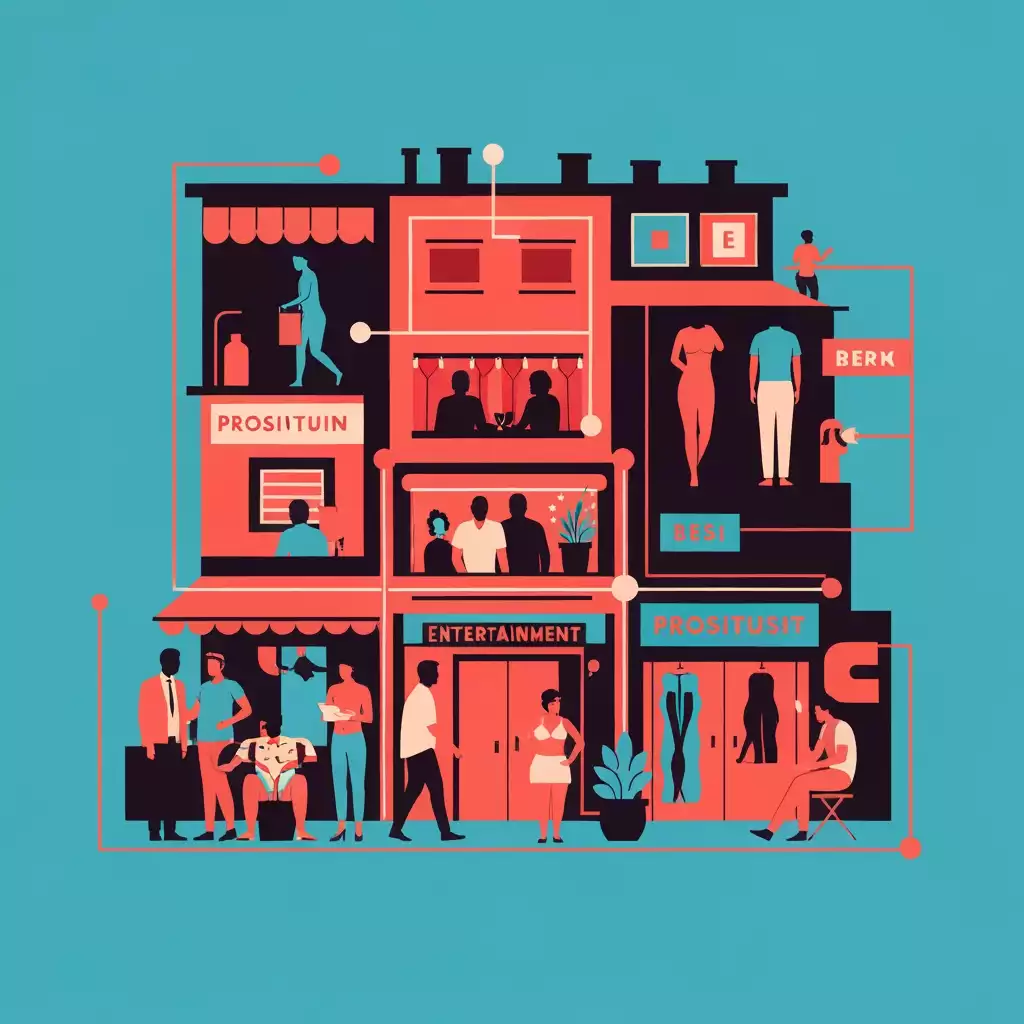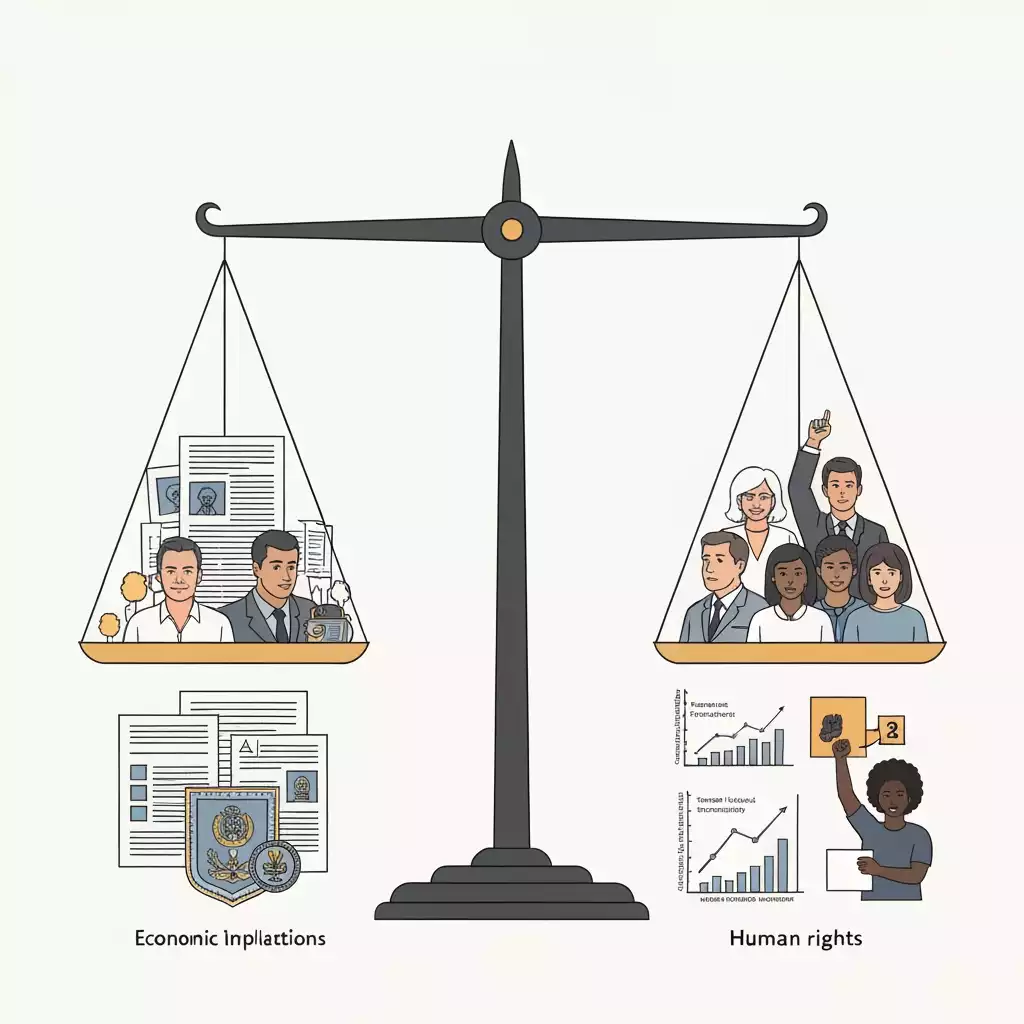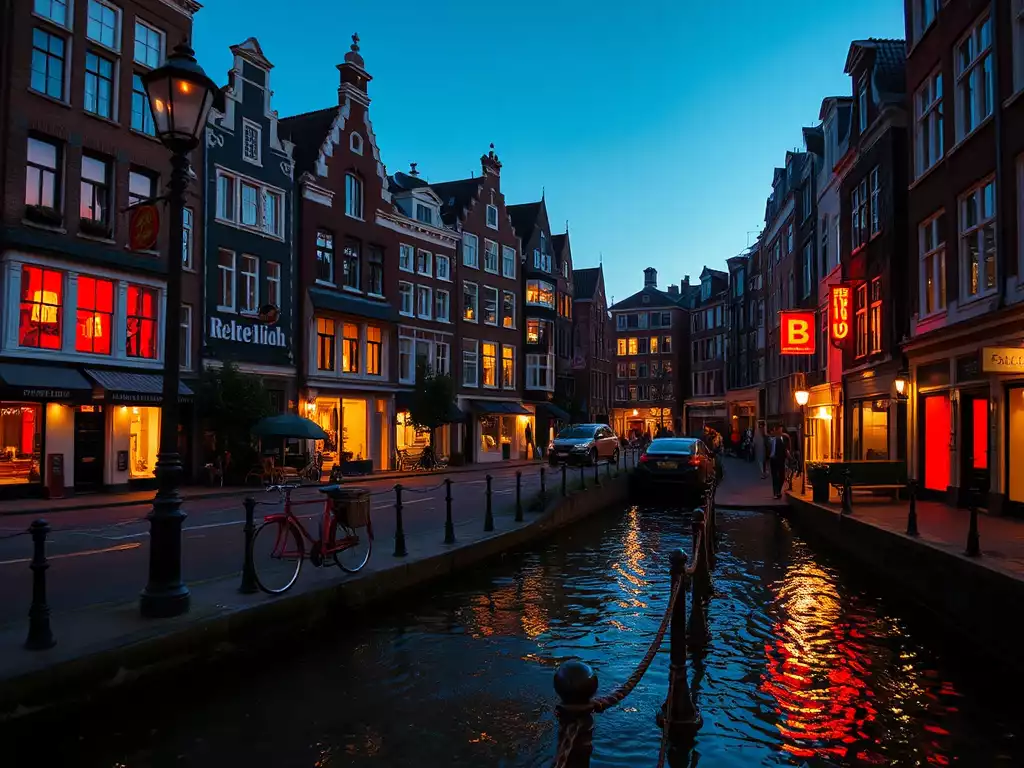In exploring the nuanced world of red light districts, one uncovers a blend of cultural heritage and contemporary debates. How do these areas reflect societal attitudes towards sex work? Understanding this complexity not only enriches one’s knowledge but also guides responsible engagement when visiting such districts.
What You Will Learn
- Red light districts serve as cultural hubs that reflect a city’s social dynamics and economic realities.
- Historical evolution has shaped these districts, influenced by changing societal attitudes and legal frameworks.
- Legalization and regulation of sex work can enhance safety and workers’ rights, varying widely across regions.
- Advocacy for decriminalization can lead to better working conditions and protections for sex workers.
- Responsible tourism involves understanding local customs and supporting ethical businesses within these districts.
- Public perception of sex work is often stigmatized, highlighting the need for discussions to promote inclusivity and reduce discrimination.
Key Aspects of Red Light Districts
Red Light Districts are complex urban areas with distinct characteristics, historical evolution, and ongoing debates about their future. The visual below highlights the key themes that define these districts.
Defining Characteristics
- •Brothels
- •Strip Clubs
- •Sex Shops
- •Adult Theaters
Historical Evolution
- •Ancient origins
- •Shaped by economic needs
- •Public health concerns
- •Evolving legal frameworks
Legal & Regulatory Landscape
- •Varied global laws
- •Legalized (e.g., Netherlands)
- •Criminalized/Restricted
- •Impacts worker safety/rights
Future Debates & Trends
- •Decriminalization advocacy
- •Public health focus
- •Community perspectives
- •Impact of technology
The Concept and Definition of Red Light Districts
Red light districts are specific areas in cities where various forms of adult entertainment and sex work are legally permitted. These zones often provide a concentrated space for sex workers, brothels, and adult entertainment venues. Understanding red light districts involves delving into their cultural, social, and economic implications, which vary significantly across different regions.
In essence, a red light district serves as a visible acknowledgment of the adult industry, balancing the interests of sex workers, local businesses, and law enforcement. It becomes essential to grasp not only what defines these areas but also how they integrate into the broader societal landscape. For a deeper understanding of how economic needs shape urban areas, explore insights into housing market trends.

Understanding What Constitutes a Red Light District
To truly understand red light districts, we must consider their defining characteristics. Typically, they are marked by a range of establishments catering to adult entertainment, including:
- Brothels
- Strip clubs
- Sex shops
- Adult theaters
These districts offer a controlled environment for both sex workers and clients, often established through municipal regulations. It’s fascinating to see how these areas can foster a sense of community among workers while also contributing to the local economy!
Historical Context: The Evolution of Red Light Districts
The history of red light districts is rich and complex, reflecting changing societal attitudes towards sex work. Historically, many cities have had designated areas for prostitution, dating back to ancient civilizations. Over centuries, these zones evolved, often shaped by economic necessity, public health concerns, and legal frameworks.
For instance, in the 19th century, as cities expanded with industrialization, the need for regulated areas grew. This shift laid the groundwork for modern red light districts, which often attempt to balance safety, health, and rights for sex workers. It’s a reminder of how far we’ve come and the ongoing discussions that surround these spaces today. You might also find parallels in discussions about understanding emotional boundaries in evolving societal contexts.
Legalization and Regulation: The Framework Behind Red Light Districts
Legal frameworks around red light districts vary widely from one country to another, influencing how these areas function. In some places, such as the Netherlands, sex work is legalized and regulated, offering protections for workers and ensuring public health measures are in place. This can lead to a safer environment for both workers and clients.
On the other hand, in many jurisdictions, sex work remains criminalized or heavily restricted, complicating the landscape for red light districts. The legal status directly impacts the safety and rights of sex workers, making it crucial for us to consider these laws when discussing red light districts.
Pro Tip
When visiting a red light district, consider engaging in conversations with local advocates for sex workers’ rights. Understanding their perspectives can provide deeper insights into the challenges and realities of the industry, allowing for a more informed and respectful approach to your visit.
Summary of Red Light Districts: Cultural and Economic Insights
Red light districts are much more than just places of adult entertainment; they are cultural hubs that reflect a city’s social dynamics and economic realities. From Amsterdam’s De Wallen to Bangkok’s vibrant nightlife, these areas offer a glimpse into the complexity of human relationships, commerce, and local traditions. It’s essential to acknowledge the dual role they play in both attracting tourists and supporting local economies.
Additionally, understanding the nuances of red light districts can lead to a better appreciation of the cultural contexts that shape them. This is particularly relevant as societies evolve and attitudes towards sex work change. By examining these factors, we can better grasp the ongoing debates surrounding the future of such districts within modern society.

The Ongoing Debate: The Future of Red Light Districts in Modern Society
As we look toward the future, the conversation around red light districts continues to grow. The legal status, societal perceptions, and economic implications of these districts are under constant scrutiny. Some argue that regulation can enhance safety and promote workers’ rights, while others contend that these areas could foster exploitation and trafficking issues.
- Advocacy for Decriminalization: Many believe that decriminalizing sex work can lead to better working conditions and protection for sex workers.
- Focus on Public Health: There is increasing recognition of the need for health services and education within these districts to promote safer practices.
- Community Perspectives: Local communities hold diverse views, ranging from support for tourism to concerns about crime and safety.
- Impact of Technology: The rise of online platforms is changing how sex work is conducted, sparking discussions about the implications for traditional red light districts.
The ongoing debate is crucial as we consider the balance between preserving cultural history and addressing contemporary social issues. It’s a complex dance that requires input from various stakeholders, including policymakers, local residents, and the sex workers themselves. For more on how societal changes impact various sectors, consider reading about AI’s impact on entry-level jobs.
Taking Action: How to Make Informed Choices About Visiting Red Light Districts
When it comes to exploring red light districts, making informed choices is essential for a respectful and enjoyable experience. Educating oneself about the local customs, laws, and the realities faced by sex workers can significantly enhance your visit. It’s not just about observing; it’s about understanding the community and its dynamics.
Engagement and Respect: Supporting Ethical Tourism Practices
As travelers, we have the power to influence the local economy and culture positively. Respecting the people and the environment around these districts can lead to a more enriching experience. Here are a few ways to engage responsibly:
- Learn Before You Go: Research the cultural significance and legal framework of the district you plan to visit.
- Support Local Businesses: Choose to frequent establishments that promote ethical tourism and treat their workers fairly.
- Be Mindful of Behavior: Maintain decorum and respect personal boundaries while interacting with locals.
- Participate in Community Initiatives: Engage in or support programs that advocate for the rights and well-being of sex workers.
By following these principles, you not only enhance your own experience but also contribute positively to the community you’re visiting. Remember, each interaction carries weight, and being mindful can lead to transformative experiences for both visitors and locals.
Further Reading and Resources on Red Light Districts
If you’re looking to dive deeper into the subject of red light districts, there are numerous resources available. From books and documentaries to online articles, educating oneself can cultivate a more nuanced understanding of this complex topic. Here are some recommended resources:
- Books on the history and sociology of sex work.
- Documentaries exploring the lives of sex workers and the dynamics of red light districts.
- Online forums and community blogs sharing personal experiences and insights.
Engaging with these resources will not only enhance your knowledge but also help shape your perspective regarding sex work and the communities that host red light districts.
Understanding Public Perception and Stigma Surrounding Sex Work
Public perception of red light districts and sex work often varies widely, influenced by cultural, social, and political factors. It’s crucial to recognize the stigma that surrounds sex work, which can lead to marginalization and discrimination against workers. By fostering discussions and raising awareness, we can work towards reducing the stigma and promoting a more inclusive society.
Understanding these perceptions is the first step in addressing the challenges faced by sex workers. Advocating for their rights and recognizing their humanity is vital in moving towards a more just and equitable future.
Frequently Asked Questions About Red Light Districts
- What is a red light district?
- A red light district is a specific area in a city where sex work and adult entertainment are legally permitted and concentrated. These districts often include establishments like brothels, strip clubs, and sex shops.
- What is the historical significance of red light districts?
- Historically, red light districts have existed in various forms since ancient civilizations. Their evolution has been shaped by economic needs, public health concerns, and changing legal frameworks, often serving as regulated zones for prostitution in expanding cities.
- How do laws and regulations affect red light districts?
- Legal frameworks vary globally, from full legalization and regulation (e.g., Netherlands), which can offer protections and ensure public health, to criminalization or heavy restrictions in other jurisdictions. These laws significantly impact the safety and rights of sex workers.
- What are the key characteristics of a red light district?
- Key characteristics typically include a concentration of establishments such as brothels, strip clubs, sex shops, and adult theaters. These areas often operate under municipal regulations aiming to control and manage the adult entertainment industry.
- How can visitors engage responsibly with red light districts?
- Responsible engagement involves researching local customs and laws, supporting ethical businesses, being mindful of personal boundaries, and participating in or supporting initiatives that advocate for sex workers’ rights and well-being. This approach helps ensure a respectful and informed visit.
Recap of Key Points
Here is a quick recap of the important points discussed in the article:
- Definition: Red light districts are areas where adult entertainment and sex work are legally permitted, reflecting cultural, social, and economic dynamics.
- Characteristics: These districts typically include brothels, strip clubs, sex shops, and adult theaters, fostering a controlled environment for sex workers and clients.
- Legal Framework: Legal status varies globally, impacting safety and rights for sex workers, with some areas offering regulation and protections, while others impose restrictions.
- Community Impact: Red light districts serve as cultural hubs that attract tourism while supporting local economies, highlighting the need for ethical engagement from visitors.
- Future Discussions: Ongoing debates focus on the balance between regulation, public health, and the rights of sex workers, influenced by changing societal attitudes and technology.
- Responsible Engagement: Visitors are encouraged to learn about local customs, support ethical businesses, and participate in community initiatives to positively impact the districts.
